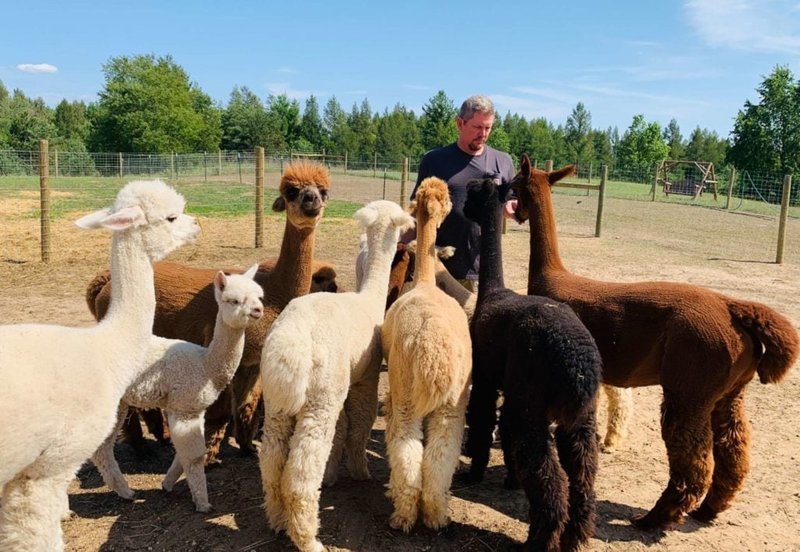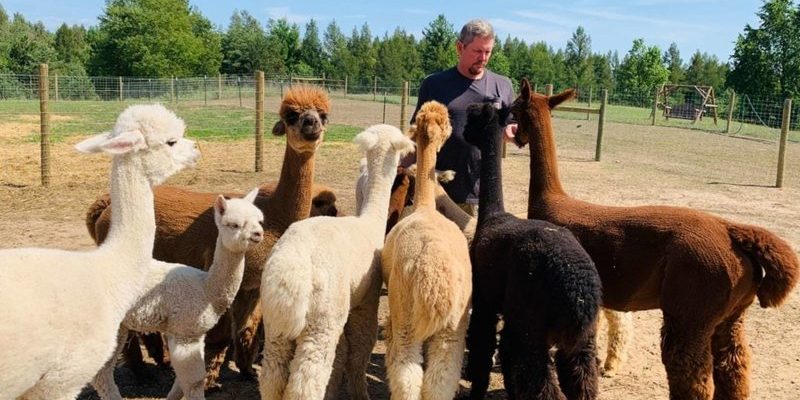
Alpacas are herd animals, meaning they thrive in groups and have developed social habits that help them bond and communicate with one another. Their behavior can reveal a lot about their emotions and social dynamics. So, let’s dive into the world of alpaca behavior. By the end, you’ll understand how these charming animals interact and express themselves, making it easier to appreciate their social lives.
The Importance of Social Structure in Alpaca Groups
Alpacas are naturally social creatures. In the wild, they live in herds that help protect them from predators and provide companionship. But what exactly does their social structure look like?
These herds typically have a clear hierarchy, often led by a dominant female, known as the “alpha.” The alpha is usually the most experienced and assertive member of the group. This social ranking is crucial; it helps maintain order within the herd. Younger or shyer alpacas often look to more dominant individuals for cues on what to do. Think of it like a classroom setting, where the teacher guides the students.
In addition to the alpha, alpacas form strong bonds with one another. They often groom each other, reinforcing relationships and friendly connections. This grooming behavior is like a warm hug among friends, helping to reduce stress and create a sense of community. If you ever see two alpacas snuggling up and nibbling at each other’s fur, you’re witnessing a sweet moment of friendship!
Common Communication Behaviors Among Alpacas
Alpacas communicate using a variety of methods, and it’s essential to recognize these signals. Their communication can be verbal and non-verbal, which is pretty fascinating when you think about it.
One of the most common sounds they make is a gentle humming. This sound can convey a range of emotions, from contentment to mild distress. You might have heard this humming when they’re relaxing or when they spot something unusual. It’s their way of chatting with the herd, almost like how we hum or talk softly to ourselves when we’re thinking.
Another crucial aspect of alpaca communication is body language. If an alpaca is standing tall and alert, it might be feeling curious or cautious. On the other hand, if an alpaca is lying down with its legs tucked underneath, it’s likely feeling relaxed and safe. Understanding these visual cues can be helpful, especially if you’re around them often. Just like in human interactions, the way they hold themselves can tell you a lot about how they feel.
Playful Interactions: Games and Roughhousing
Alpacas aren’t just serious creatures; they love to play too! Young alpacas, known as cria, often engage in playful behaviors that look like they’re having a blast. Imagine a kid playing tag—this is similar to how cria frolic around, kicking up their heels and darting off in various directions.
Play is vital for their development. It helps them learn social skills, like how to get along with others and resolve conflicts. It also keeps them physically active and mentally stimulated. Just like children who learn while playing, cria do the same, mastering their agility and coordination through fun.
Interestingly, adult alpacas also enjoy playtime. They might chase each other or engage in gentle sparring matches, using their necks to push against one another. This behavior is not about aggression; it’s more about establishing boundaries and testing their strengths. Observing these interactions can be entertaining, as you witness a side of alpacas that reflects their joyful spirits.
Understanding Alpaca Emotions: Signs of Stress and Relaxation
Recognizing how alpacas express their emotions is essential, especially if you are caring for them. While their faces may seem calm, they can experience various feelings, from happiness to anxiety.
For example, if an alpaca’s ears are perked up and facing forward, it’s likely feeling curious or excited. In contrast, if you notice their ears pinned back against their heads, that’s a sign of stress or discomfort. It’s similar to how we might fold our arms when we’re unhappy or anxious. Paying attention to these subtle cues can help you create a happier environment for them.
When alpacas are relaxed, they often engage in grooming behaviors, as we discussed before. You might also see them lying down and chewing their cud, which means they’re feeling content. If you’re around, and they seem to be in a chill mood, you might even catch them dozing off. Seeing an alpaca in a peaceful state is a heartwarming sight!
Building Trust With Alpacas: Best Practices
If you’re considering spending time with alpacas, building trust is crucial. They respond well to kindness and patience, much like how friendships develop. Start by allowing them to get used to your presence. Stand quietly and let them approach you at their own pace. It’s essential not to rush this process; think of it like meeting a shy friend for the first time.
Once they seem comfortable, try offering treats like carrots or apples. This creates positive associations, making them more likely to come closer. Alpacas are naturally curious, so don’t be surprised if they investigate you with gentle nudges or sniffing. Just remember to move slowly and avoid sudden gestures, which could startle them.
Providing a safe and calm environment is also vital for building trust. Make sure their living space is clean and secure. If you’re caring for them, establish a routine that includes feeding, grooming, and interaction, as consistency helps them feel more secure around you.
Why Understanding Alpaca Behavior Matters
Understanding alpaca behavior isn’t just fascinating; it’s essential for their well-being and happiness. When you know how they communicate and interact, you can help create a healthy environment for them. This knowledge not only improves their quality of life but also enhances your experience with these charming animals.
For those involved in alpaca farming or caring for them as pets, being aware of their social habits allows for better management. You’ll be able to recognize signs of stress or discomfort early, ensuring that their needs are met. This proactive approach helps minimize complications, leading to healthier and happier alpacas.
In conclusion, the world of alpaca behavior is rich and varied. From their social structures to their playful interactions, these animals offer a unique glimpse into the complexities of herd life. By understanding their communication styles and emotional needs, you’ll deepen your appreciation for these wonderful creatures, making your interactions with them all the more rewarding.

